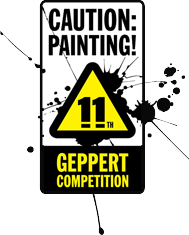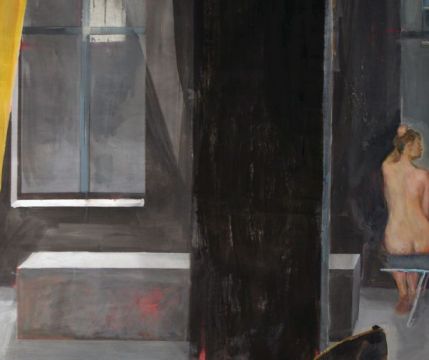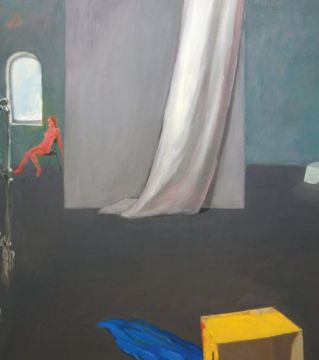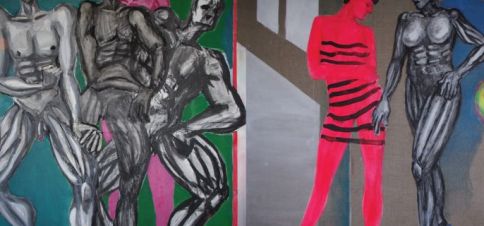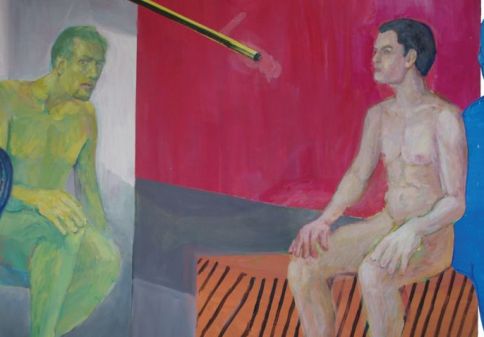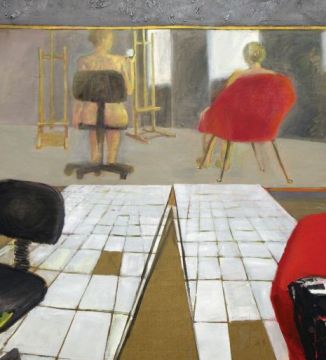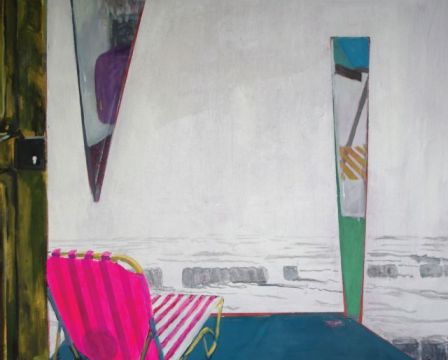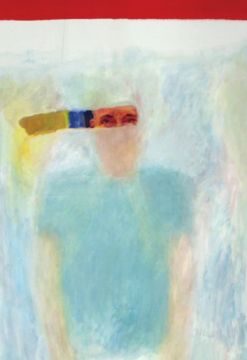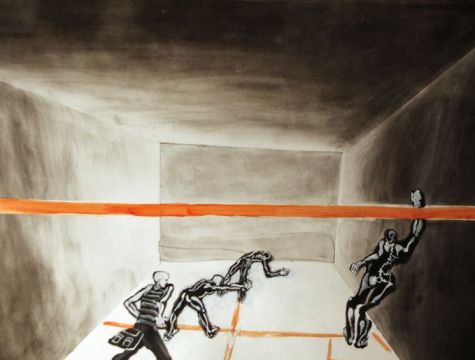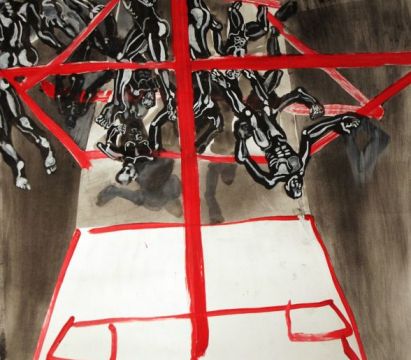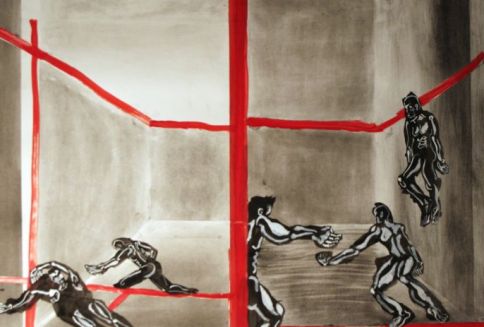Jakub Malinowski
Born in 1985, studied painting at the University of Fine Arts in Poznań, specializing in easel painting (2006-2011). Diploma with honours in Prof. Marek Przybył’s studio. Lecturer in drawing at the 7th studio of the University of Fine Arts in Poznań since 2011.
Jakub Malinowski has based his artistic work so far on the universe of the painting studio. The colourful surfaces of fabrics, intensity and variety of textures of objects constituting systems of still lifes have been reason enough for him to create his own world, in which directions, bold compositions, aggressive colour juxtapositions and, most importantly – light, have all defined the vectors of his artistic quest.
During the five years of study, Jakub Malinowski had a semester-long adventure of studying at the University of Art and Design in Cluj, Romania, where he learnt the principles of icon painting. As he writes himself, he had to tame his own, barbarian approach to painting and drawing. Working on an icon taught the artist humility and patience. He discovered the rules of work on signs and creating their significance. He learnt how to lay paint in a different, pure and multi-layered way. He grasped the importance of the line and re-discovered its capabilities for his own use. Finally, he encountered a new painting technique – the egg yolk tempera. It bore fruit in the painter’s works after his return from Romania. He got more daring in juxtaposing different images, broadened his repertoire of materials to include foil, sheet metal, cardboard and fluorescent paints. The effect was a dynamic, modernist impact of his works on the viewer, allowing a range of interpretations, if occasionally bordering on chaotic in sticking to the central message of expression.
His recent works display more formal and content-related discipline. The means fit the intended themes more closely. The paintings and drawings concentrate on a more precise transfer of important meanings. And what are the young artist’s inspirations? In fact, anything which is in his close environs: the studio, the street, the squash court. As far as the topics are concerned, there are also some existential issues: solitude, emptiness, interpersonal dialogue or its violent manifestation – the quarrel.
The two paintings submitted for the 11th Geppert Competition in Wrocław are good examples of that approach. The first, entitled “Homesick I”, presents a large interior with a woman next to a mirror in the background. Contrary to the artist’s previous works, which were formally elaborate, this one emanates apparent peace and provokes questions I am not sure we want answers to. The meaning of the picture lies in the environs of the figure, with so few objects around. The bright yellow curtain is nostalgic, the empty chair in the foreground and empty bookshelves on the left are immersed in a grey, hopeless atmosphere. The world seen outside the window is not joyful either. Overall, with its pervading grey everywhere, the situation reflects the lonely nature of human existence.
The second painting, “Homesick II”, complements the first one in the message it projects. The principle of composition of such a large canvas is similar too. The distant, sitting figure of the woman seems to be waiting for something. In the background, to the left of the curtain, a big skeleton is seen as if taken from Baroque images which say “memento mori”. The curtain covers something we can only imagine. What appears most intriguing is the box, with its interior facing the viewer, yellow on a blue cloth. Despite its colour attractiveness, it evokes some undefined horror, turning the seeming attractiveness into a trap. It attracts with its intensity of colour, making us gradually forget the real message of the painting.
In my description of Jakub’s works, I must also mention his latest paintings and drawings. In my opinion, the most noteworthy paintings include “Double Space” and “Dispersal”, as well as drawings – “Passage”, “Conclusion” and “Contest”, all to be found within the framework of the presentation. The painting entitled “Double Space” is a kind of a joke, in which the painter makes fun of the convention we follow when watching paintings in general. There are a lot of spaces, but in this case the artist means the space surrounding the mirror and the space of its mirror reflection. And a figure appears again. A double figure. Another very interesting work is “Dispersal” – light and devoid of any straightforwardly existential meanings. It is constructed in the artist’s well-tested manner, which is a compilation of various, differently painted fragments of reality, except in a lighter and more precise way. Looking at those works, and comparing them with his earlier pieces, I have an impression the painter refers to the sine waves mentioned in his own text. He used the metaphor of sine waves to describe his departures from the painted picture and then returns, thematic changes and time intervals e.g. associated with illness. Every break in painting serves as reflection and an opportunity to draw conclusions for the future. Jakub’s drawings are his attempts at new solutions allowing him to make a quick note which records each new idea. The drawings/notes also allow for errors – the category which releases new ideas. Jakub Malinowski is an artist aware of his position in art, consciously using known concepts to interlace them with his own painting ideas.
Andrzej Zdanowicz
